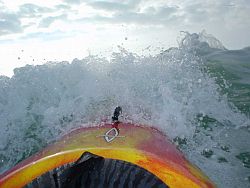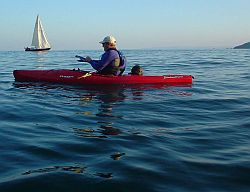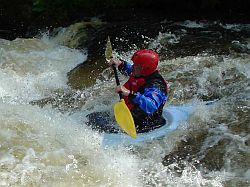
|
|



|
PCC Health and Safety PolicyFor a PDF version of this page, click hereFirst a quote from BCU Health and Safety guidance notes:“Not every type of canoeing is a ‘risk’ activity. No adventure sport can ever be totally safe. Respect and admiration is due to those who, knowing their sport and their abilities push back the frontiers of feasibility by tackling ever harder grades of water; or choose to explore in wild and lonely places; or undertake solo paddling be it in one of these contexts, or simply to find their own level of self fulfillment.We do not agree with those who regard the occasional inevitable loss of life in these circumstances as disastrous for the sport. Nor that those who choose these outlets - knowing what they are at - are acting in an irresponsible manner. Far from it. They are keeping alive - in fact they are furthering - the essential spirit in mankind to advance against the elements.We are, however, faced with a dilemma. We all want and demand ‘freedom’. In reality, however, if the exercise of that ‘freedom’ causes us harm, a growing number of people then want to apportion blame. Some would seek recompense against those who permitted or set up the activity. The media joins in this process. In consequence, incidents are distorted beyond recognition, and the dividing line between freedom of action, and responsible provision, becomes difficult to define.Numerous examples of this process can be cited, sometimes leading to increased legislation.Some forms of canoeing have an inherent risk factor. Regrettably, when a tragedy does occur, the media tends to react out of all proportion to the actual very low incidence of fatalities within the sport. The difficulty for the Union, as the Governing Body, is to tread the border zone of taking reasonable precautions, yet retaining the adventurous nature of those aspects of the sport which carry an element of danger.Our order of priority in deciding whether action of any kind should be taken, is:That no one should lose their life or be seriously injured, if this could have been avoided through the implementation of simple warnings or safeguards.The BCU and its coaches work to ensure that those taking part in canoeing are able to do so protected and kept safe from harm while they are with staff, coaches and / or volunteers. This is particularly true in respect of children and vulnerable adults.That unnecessary adverse publicity should not accrue to the sport, hastening the day when further restrictive legislation may be applied, or giving excuse to those who would even now use any reason to bar our activity.That where reasonably possible, grounds for a claim that would invoke our insurance policy be avoided, in order to ensure the continuance of this benefit as a final compensation to an injured party, at a reasonable cost to the membership. “(http://www.canoe-england.org.uk/media/pdf/Health%20%20Safety%20Policy.pdf) (referenced Sept 2012)Paignton Canoe Club exists in order to stimulate interest in canoeing locally, provide regular opportunities for its members to enjoy all aspects of this activity in a way that is safe and fun for all, encourage interest in everyone; male or female, young or old, novice or experienced. The above BCU summary position on H&S expresses well the dilemma we face. Ultimately Paddlesports always carry an element of risk. Accidents can and occasionally do, happen. Individuals should make their own judgments, and not put others at risk by being overconfident. Do not be pushed by peer pressure, misplaced personal pride, or other influences too far outside your comfort zone. Be prepared to walk round an obstacle, or pull out of an activity if it is too much. The Club and it’s members will support your decision. But do push the boundaries and grow in your ability and experience. This policy should be read in conjunction with the PCC Operating Procedure and PCC Child and Vulnerable Adult Policies. The BCU policy should be used as the ultimate H&S guidance, but below are some points particular to all Paignton Canoe Club activities.
Reviewed at AGM Sept 2012 |
|
|